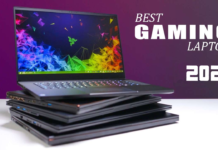No matter which version of Mac you have, it will become slower eventually. In today’s fast work life, a sluggish device feels pathetic. It can spoil the tempo of your work and your performance as well. However, the good thing is there are solutions to such problems without opting for a new Mac every year and shedding a hell of a lot of money.
Your Mac can perform slower for various reasons. For example, your MacBook Pro can perform slower due to an older version of the SD Card reader provided by Apple, as confirmed by Forbes. However, the most common reason behind the slow performance of Mac is a lack of space in your hard disk drive. Your Mac starts up by booting the “Startup disk” first, and the process becomes slow when your disk has less than 15% of free space. As a result, your device becomes sluggish.
However, you can learn about how to deal with an almost full start-up disk here https://setapp.com/how-to/fix-startup-disk-full-problem. That will help your device perform faster.
This article will discuss the probable way-outs to make your slow Mac perform at a reasonable speed.
Off Unnecessary Applications
You may think that it is not in use as you are not using a certain application. But the fact is if you seldom shut down your Mac, then there can be applications running in the background. Your Mac assigns memory and CPU usage to those applications unnecessarily. That slows down the performance of the currently used applications, and you feel your device behaving sluggishly.
You can detect the applications running in the background by checking the ‘Dock’ provided at the bottom of the screen. A dot will appear underneath the applications that are running. You can right-click or, Ctrl-click on the specific application icon and select ‘Quit’ to switch it off. If an application shows the “Force quit” option after right-clicking on its icon, you have identified the application slowing down your device. Close all such applications showing the “Force quit” option.
Availability Of Enough Free Space
Make sure that the hard disk drive of your Mac has enough free space. Mac cannot read and write the swap files without enough free space. As a result, the device becomes slower. Besides, the built-in safeguard features of your Mac also stop working if the available free space is less than 10%.
You can always check the space available on your hard disk by clicking the “About this Mac” under Apple Menu. However, if your hard disk drive is almost full, you need to free up some storage to ensure your Mac’s faster and safe operation. If you upload many videos and photos in your Mac regularly, it will eat up the space very fast. You need to transfer the older pieces of stuff into your external drive. You can delete email backup files and older applications that are of no use anymore to free up space.
If you are using the latest macOS, it will be wiser to store your visual contents in iCloud in place of your Mac.
Identify The Power-Hungry Applications
Not every application in your Mac draws the same system resource. There are a few power-hungry applications that unnecessarily draw more powers. You can take care of those apps by following the below steps,
- Go to the ‘Utilities’ folder.
- Open the “Activity Monitor”.
- Click on the CPU button.
- Click the ‘%CPU’ column to check the CPU usage by each program.
- Identify the application eating up a lot of CPU power.
- Select that application icon with the mouse and click ‘X’ in the menu bar to close it.
RAM Management
Unless you are using a quite old Mac device, there is no option for increasing your RAM. All latest MacBooks come with in-built memory on the chip itself. So, the only option to improve your RAM is to free up the existing one. Following the below steps, you can easily free up some memory,
- Go to the ‘Utilities’ folder.
- Open the “Activity Monitor”.
- Click on the ‘Memory’ tab.
- Click on the Memory column to check the app wise memory usage.
- You can identify the unnecessary apps eating up your RAM.
- Select that application icon with the mouse and click ‘X’ in the menu bar to close it.
Update Software Regularly
It is essential to update the operating system of your MacBook regularly to ensure a smooth and hassle-free operation. Though updating to the latest version can also create some initial problems depending on your device’s compatibility, you can always downgrade in such a scenario.
Conclusion
If your Mac suddenly starts performing slow, do not just exchange it for a throwaway price and bring a new one. It may be due to a shortage of free disk space or RAM. Shut down your Mac at times to ensure that unnecessary apps are not running in the background.























































